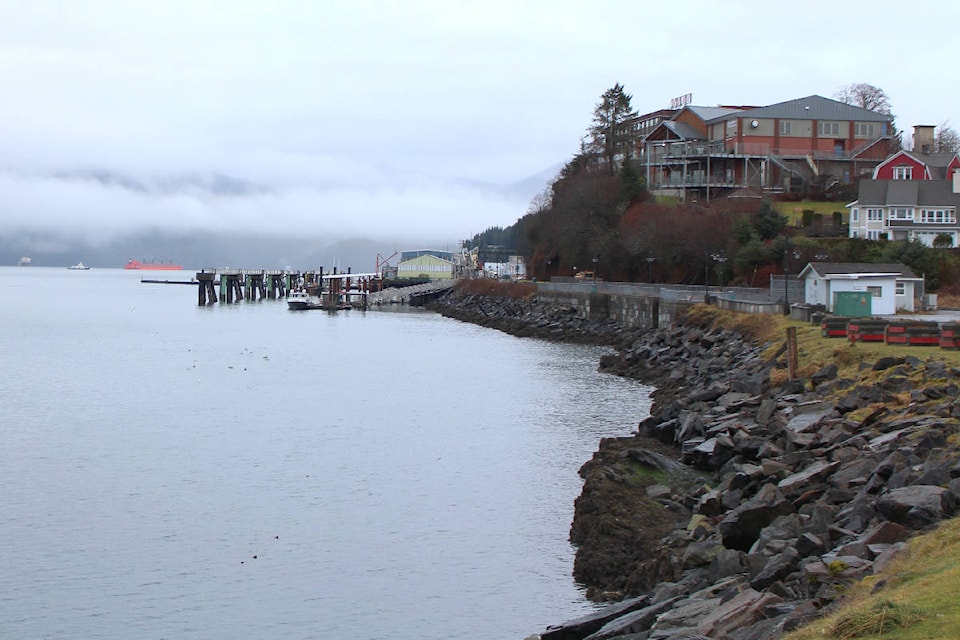Prince Rupert is lagging behind its greenhouse gas (GHG) emission reduction targets, but a new plan aims to change that.
Currently, the city’s GHG emissions are 16 per cent above its targets and will not realistically meet the decrease needed for the 2020 target. In 2010, total GHG emissions stood at 81,300 tonnes.
A window into the city’s plan to hit its reduction targets was provided on Monday, May 8 when city manager of community development Hans Seidemann gave an update to Prince Rupert city council.
Previous reduction targets as outlined in the 2008 Official Community Plan (OCP) had the community of Prince Rupert dropping its emissions by five per cent from 2008 levels by 2012, 15 per cent by 2016 and 33 per cent by 2020 (also provincial targets).
Seidemann provided council with an updated Community Energy and Emissions Plan (CEEP), which was developed after a two-day workshop in November brought city staff, the mayor, port officials, college representatives and community members together.
If implemented to its fullest, the new CEEP could achieve a 12.5 per cent reduction in emissions over the next five years.
“It would still be short of the community’s target as specified in the OCP, but it would move us about one-third of the way there, which is a significant improvement over the current business-as-usual progress the city has made,” Seidemann said.
The workshop participants identified that Prince Rupert’s citizens are generally environmentally aware and its emissions resemble those of similar-sized communities in B.C. Between 2007 and 2010, the community saw a marked increase in emissions from vehicles and commercial/industrial buildings. This was attributed to an increase in marine shipping activity in the area.
The group formulated a five-year action plan where many different initiatives can be taken to reduce emissions. The city has already changed some street lighting to LED lighting to save energy. Some of the actions that may be taken in the next few years include building code energy efficiency evaluations, rezoning policies to achieve desired energy performance, realtor education, energy labelling on new homes, street design, 30 km/hr speed limits in some parts of the city, improving transportation infrastructure, anti-idling campaigns, bike awareness events, waste organics diversion, supporting local food production and supporting the port in the Green Marine Program.
Top actions also include diverting organics from the landfill in 2020, encouraging biomass heating in commercial/industrial areas through leading by example and using renewable energy systems.
“The city and residents spent $47 million per year on energy costs like transportation fuels, home heating and electricity. If we were to adopt this current plan and fulfill it to its fullest extent, within five years we would see $5 million of that $47 million expenditure not spent on energy (and leaving the city),” Seidemann said.
Coun. Joy Thorkelson added that the Jim Ciccone Civic Centre is one of the largest contributors of GHG emissions in the city, and the municipality could look at options like linking the energy systems between the pool and rink heating and cooling systems, as well as planting young trees. She also suggested having council updated yearly on the city’s performance.
Coun. Barry Cunningham asked if the city could implement a turbine generator at the dam, to which Seidemann responded that since the area is a BC Parks conservancy, the city can’t use it for hydro generation. Cunningham also suggested that an incinerator might be a good investment at the landfill as opposed to having the waste just lie there and produce methane.
Coun. Nelson Kinney asked for an update on the region’s proposed wind farms by Sea Breeze Power Corp., and Seidemann said that the company is in the development permit application process with an active working group.
Mayor Lee Brain added that a mayor’s select standing committee has been working on a policy booklet to be prepared for council around 2030 Sustainable City, one of the pillars in the city’s Hays 2.0 plan.
